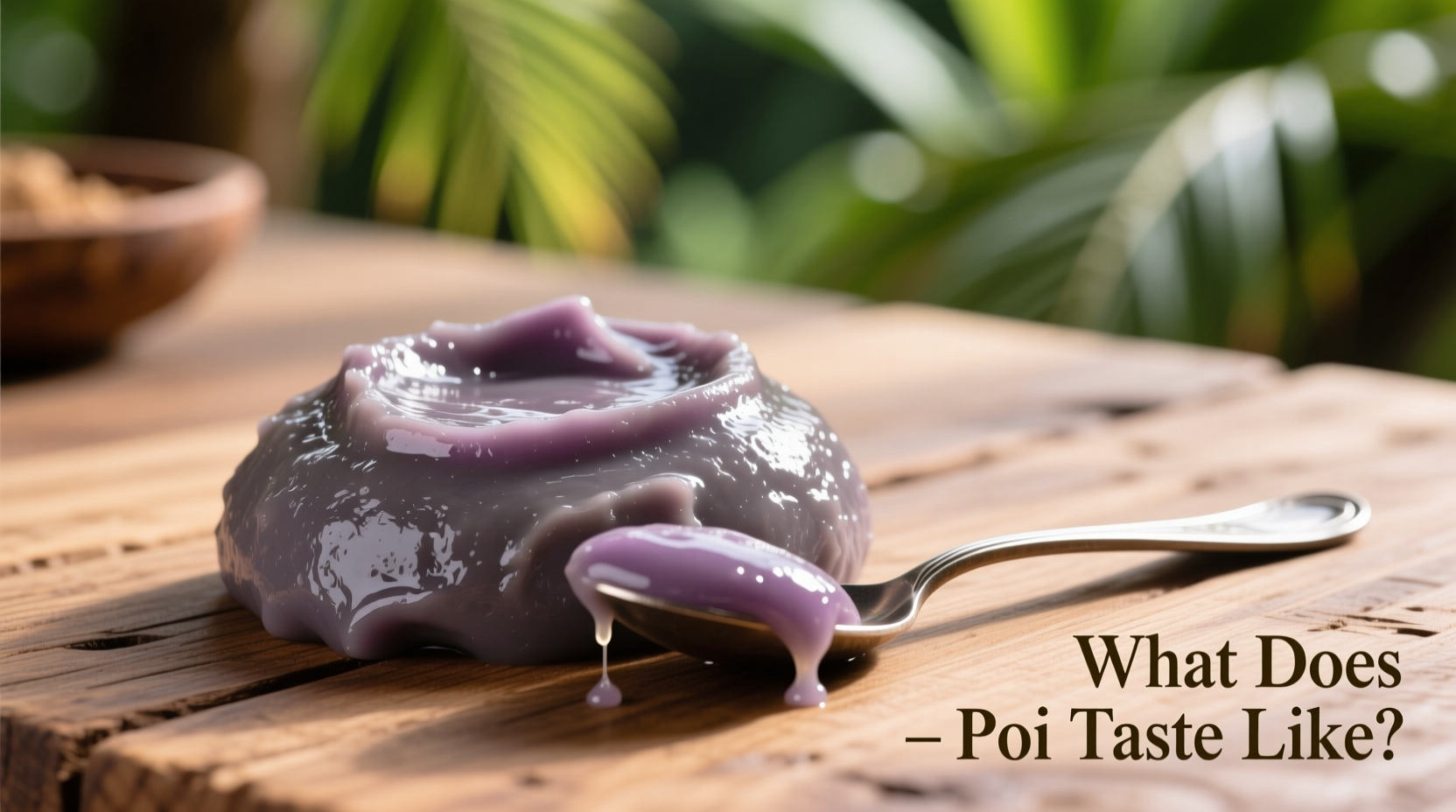If you've ever wondered what poi tastes like, you're not alone. This traditional Hawaiian staple often surprises first-time tasters with its unique flavor profile that's difficult to compare to anything in Western cuisine. Let's explore exactly what to expect when trying this cultural treasure.
Understanding Poi: More Than Just a Food
Poi is a traditional Hawaiian food made from taro root (kalo), which has been cultivated in the Hawaiian Islands for over a thousand years. The process begins with steaming or baking the taro corm, then pounding it with water until it reaches a smooth, paste-like consistency. This ancient preparation method connects modern eaters to Polynesian ancestors who brought taro to Hawaii.

The Flavor Journey of Poi
What does poi taste like? The answer depends on how recently it was prepared:
| Freshness Level | Flavor Profile | Texture Characteristics |
|---|---|---|
| Fresh (same day) | Mildly sweet, starchy, subtle earthiness | Thick, smooth paste, similar to mashed potatoes |
| 24-48 hours old | Developing tanginess, more complex | Slightly thinner, still cohesive |
| 3+ days old | Pronounced sourness, fermented notes | Thinner consistency, almost drinkable |
How Fermentation Transforms Poi's Taste
One of the most fascinating aspects of poi is how its flavor evolves through natural fermentation. This timeline shows what happens as poi ages:
- Day 1: Very mild flavor, almost bland with just a hint of sweetness. Many first-time tasters describe it as "tasting like nothing" initially.
- Day 2: Subtle tanginess begins to develop as natural lactobacilli start working. The flavor becomes more interesting but still gentle.
- Day 3-4: Distinct sour notes emerge, similar to unsweetened yogurt or buttermilk. This is when many Hawaiians consider poi to be at its peak flavor.
- Day 5+: Strong sourness develops, which some describe as pleasantly sharp while others find it challenging. At this stage, it's often diluted with water.
Sensory Experience: Beyond Just Taste
Understanding what poi tastes like requires considering the full sensory experience:
- Texture: Traditional poi has a smooth, slightly粘稠 consistency that coats the mouth. It's not gritty but has a distinctive slippery quality that's part of its unique eating experience.
- Aroma: Fresh poi has a mild, earthy scent reminiscent of cooked root vegetables. As it ferments, it develops a subtle sour aroma similar to sourdough starter.
- Mouthfeel: The texture changes as you eat it - starting smooth but leaving a clean finish without greasiness.
Regional Variations Across Hawaii
While poi's basic preparation remains consistent, there are subtle regional differences across the Hawaiian Islands that affect its final taste:
- Oahu: Often slightly thicker consistency, traditionally served at luaus as a centerpiece
- Big Island: Some families add a touch of salt, enhancing the natural sweetness
- Kauai: May be prepared with slightly more water for a thinner consistency
- Maui: Often allowed to ferment slightly longer for more pronounced tanginess
These variations reflect how poi has adapted to local preferences while maintaining its cultural significance. According to the University of Hawaii's College of Tropical Agriculture and Human Resources, these regional differences emerged as families developed their own preparation techniques over generations while preserving the food's spiritual and cultural importance. Learn more about Hawaiian taro traditions.
How to Approach Poi for the First Time
If you're wondering what does Hawaiian poi taste like and plan to try it, here are some practical tips:
- Start with fresh poi rather than fermented to experience the milder flavor
- Try it at room temperature - refrigeration dulls the flavors
- Take small spoonfuls initially to let your palate adjust
- Consider pairing it with kalua pig or lomi salmon to balance the flavors
- Don't expect strong flavors - poi's subtlety is part of its charm
Common Misconceptions About Poi's Flavor
Several myths persist about what poi tastes like:
- Myth: Poi tastes like bubblegum (this confusion comes from a commercial poi product called "POI" that was bubblegum-flavored)
- Reality: Traditional poi has no fruit flavors and is completely natural
- Myth: Poi is always sour
- Reality: Only fermented poi develops sour notes; fresh poi is quite mild
- Myth: Poi tastes like paste or glue
- Reality: Properly made poi has a pleasant, smooth texture and subtle flavor
Modern Interpretations and Serving Suggestions
While traditional poi stands well on its own, contemporary Hawaiian chefs sometimes incorporate it into innovative dishes while respecting its cultural significance:
- As a base for poke bowls, adding subtle sweetness to complement fish
- Blended with coconut milk for a dessert version
- Used as a thickener in soups and stews
- Served alongside grilled meats to balance rich flavors
When experiencing authentic poi, remember that in Hawaiian culture, it's more than just food—it's considered a symbol of family and connection to the land. The phrase "eating poi" in Hawaiian culture often refers to sharing a meal together, highlighting its role in community and hospitality.











 浙公网安备
33010002000092号
浙公网安备
33010002000092号 浙B2-20120091-4
浙B2-20120091-4